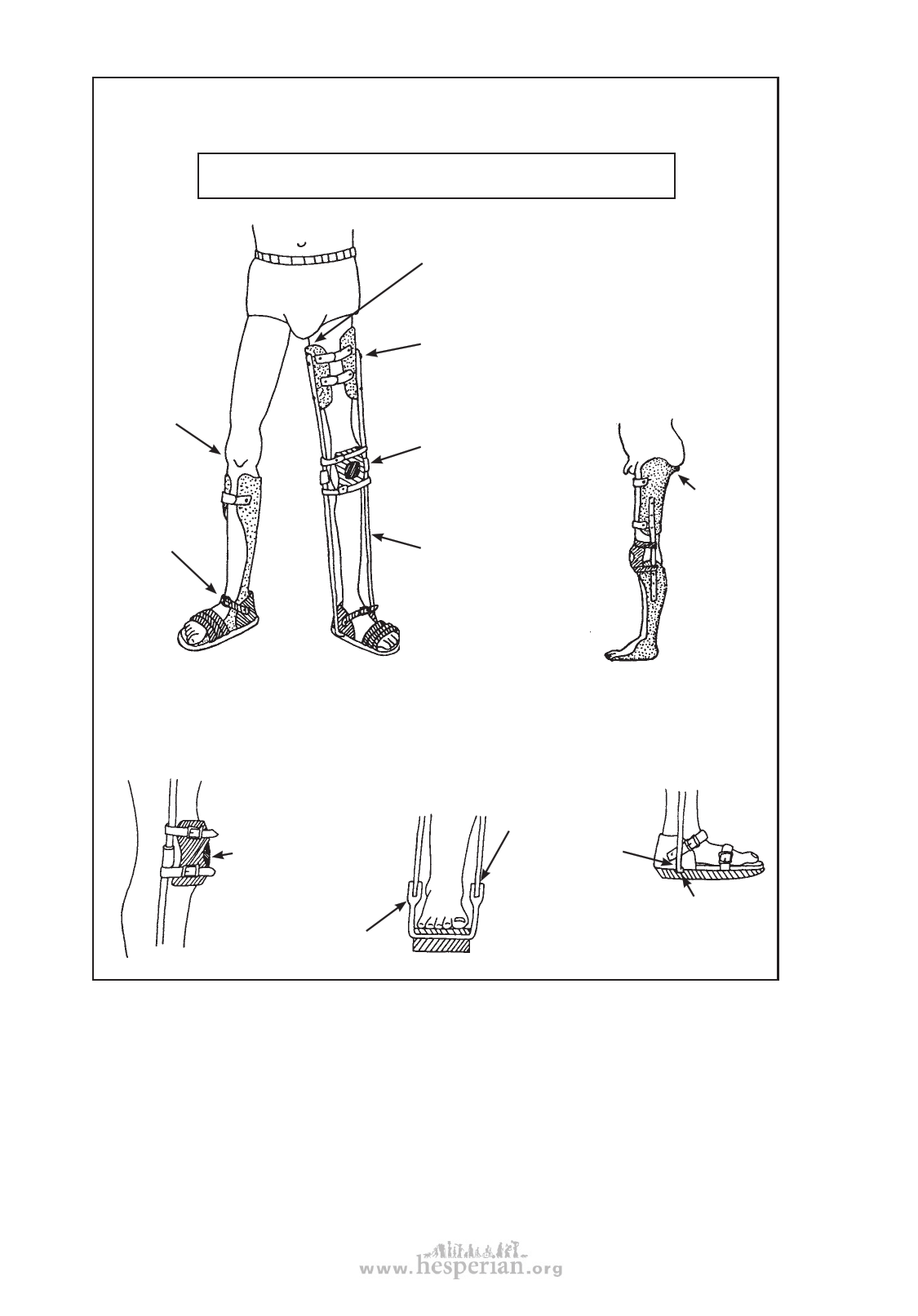
542 chapter 58
FITTING PLASTIC OR METAL BRACES
IMPORTANT: Correct measurements are essential for a good fit.
Below-knee
brace should
reach almost
to knee, yet
allow knee
to bend all
the way.
Brace or
clog should
grip heel
and ankle
closely.
Above-knee
brace should
reach to about
2 cm. below
groin.
Upper part of
leather or plastic
of brace should
fit around the
thigh closely.
Knee hinge (if used)
should be at the
middle of the knee,
both in height and
from front to back.
Side pieces should
be close to knee
but not touch or rub
the child when he
walks.
If the leg is very weak
or joints are damaged,
the top of the brace
can have a lip on which
the butt rests, to
bear part of the body
weight. (For design,
see “Artificial Legs,”
p. 633.)
lip under
butt
PLASTIC BRACE
METAL BRACE
KNEE
PIECE
HINGE AT
ANKLE LEVEL
Soft
part of
pad sits
directly
over
kneecap.
Ankle hinges,
if used,
should be
at the level
of the bony
lumps of
the ankle.
Note: A brace with
a hinge at ankle
level is better
than one with a
hinge at foot level
because it bends
at the same height
as the ankle joint.
(However, a metal
brace with ankle
hinge is more
difficult to make.)
HINGE AT
FOOT LEVEL
Side rod should
attach at a point
directly below the
midline of leg.
METAL BRACES
The advantages of simple metal braces are that they are quick, easy, and cheap to
make. They often last longer, and, if used with sandals or clogs, in hot weather they
are cooler than plastic. However, they also have disadvantages: because a shoe,
sandal, or wood ‘clog’ must be built or attached to the brace, there is additional work
and cost. Also, they are heavy, clumsy, and more noticeable. In hot or wet weather,
leather or cloth, or even the metal starts to rot. Shoes or boots which the child cannot
change, even when they get wet, begin to stink.
Disabled village Children